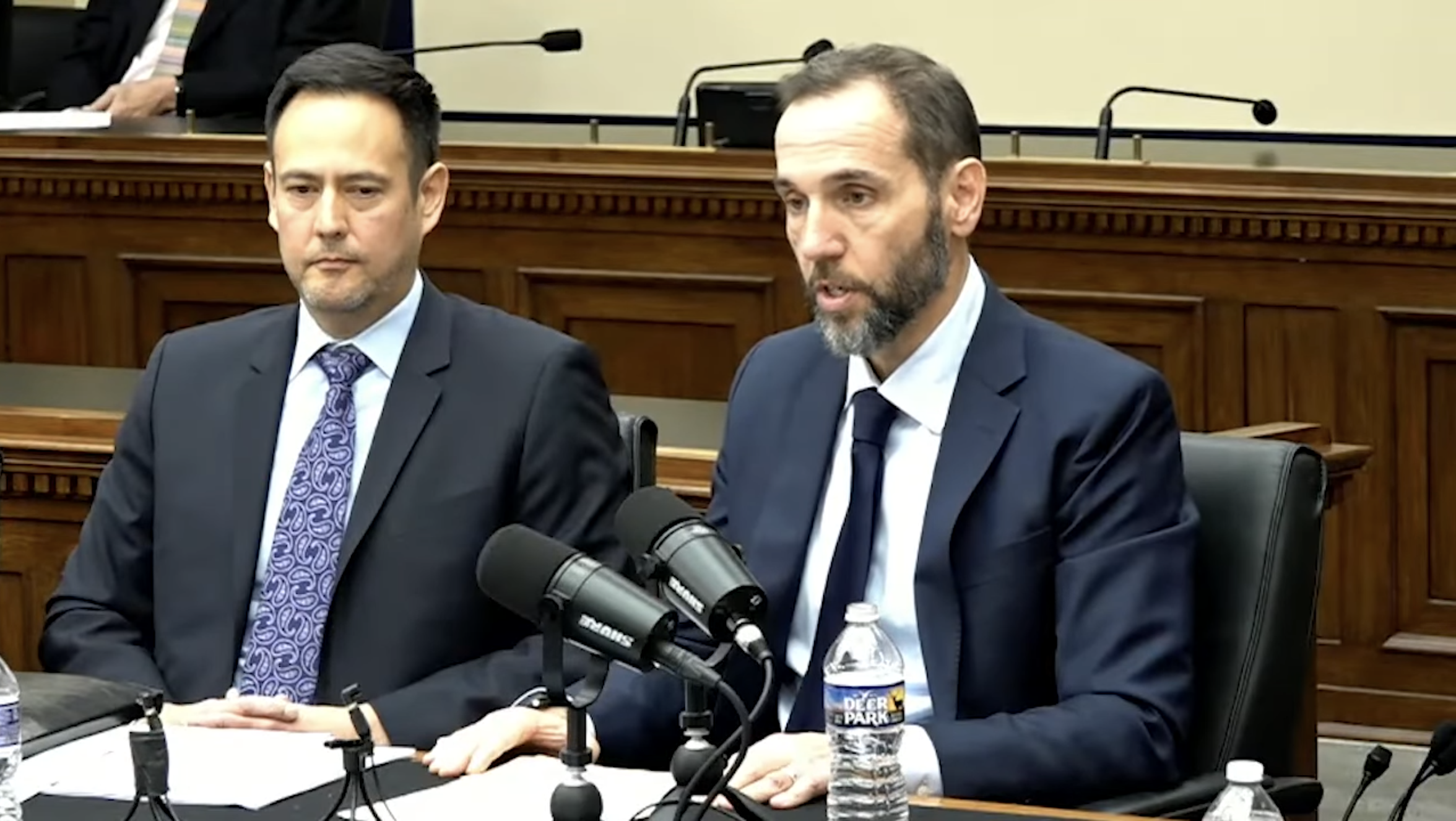Asylum Update: Trump’s ‘Remain in Mexico’ Policy Can Continue, the Ninth Circuit Rules
On May 7, the Ninth Circuit stayed an injunction against the Trump administration’s “Remain in Mexico” policy. That policy, officially called the Migrant Protection Protocols (MPP), requires the return of certain migrants to Mexico pending a full immigration court hearing.

Published by The Lawfare Institute
in Cooperation With

On May 7, the Ninth Circuit stayed an injunction against the Trump administration’s “Remain in Mexico” policy. That policy, officially called the Migrant Protection Protocols (MPP), requires the return of certain migrants to Mexico pending a full immigration court hearing. The Ninth Circuit panel’s majority, which included conservative judge Diarmuid O’Scannlain and liberal judge Paul Watford (Judge William Fletcher dissented), found that the Immigration and Nationality Act (INA) granted immigration officials discretion to either keep foreign nationals in the United States under the “expedited removal” process or require them to wait in Mexico for a hearing.
The Trump administration has opted for the latter course for prospective immigrants at certain border crossing points, in hopes of reducing the escalating number of entries of Central American migrants. The Ninth Circuit’s decision allows the administration to continue with this policy. The result, as Judge Watford’s concurrence recognized, may be greater risk for bona fide asylum seekers.
The statutory question turns on whether the expedited removal process, which Congress added to the INA in 1996, is the exclusive means for processing prospective immigrants who are inadmissible because they either lack a visa or have fraudulent documents. Under expedited removal, immigration officials can summarily remove foreign nationals at the border unless they express a fear of persecution in their country of origin. If an entrant does so, a trained asylum officer interviews the subject to determine whether he or she has a “credible fear” of persecution. If so, that person gets a full hearing before an immigration judge. If the asylum officer finds no credible fear, the subject gets a truncated hearing before an immigration judge, often without counsel.
While Congress added the expedited removal provisions to the INA to make it easier to remove aspiring entrants, in practice that process has not resulted in speedy removal of the bulk of Central American migrants, who have sought to enter the United States in increasing numbers since 2014. The key reason is that Central American migrants, fleeing violence and the effects of deforestation and climate change, have often come to the United States as families with children. Under current judicial rulings regarding the federal court settlement in the Flores v. Reno case, immigration officials cannot detain children—whether accompanied by their parents or not—for longer than 20 days. After the Trump administration ceased its disastrous policy of separating families, officials releasing children into the United States after 20 days also had to release the children’s parents.
Even with the more summary procedures authorized in expedited removal, it is virtually impossible to complete an asylum case within 20 days. So claiming asylum, whatever the merits of the claim, became a path to release into the United States for many Central American border entrants. That is why the Trump administration turned to the “Remain in Mexico” option.
The “Remain in Mexico” option, or Migrant Protection Protocols, flows from a provision of the INA added in 1996—8 U.S.C. § 1225(b)(2)(C)—that allows immigration officials to return certain new entrants to a country that is “contiguous” to (i.e., bordering on) the United States while those foreign nationals await a full hearing before an immigration judge. As the New York Times immigration analysis cited earlier noted, most Central American asylum claimants ultimately lose in immigration court. As a result, immigrants subject to the MPP will typically not be released into the United States. Instead, they will remain in Mexico, receive an immigration court hearing, and then—if they lose—either stay in Mexico permanently or wait in Mexico for removal to their Central American country of origin. Trump administration officials found the MPP compelling because it would substantially curtail the release into the United States of Central American migrants.
The challengers to the MPP, a collection of immigration advocacy groups and legal clinics, argue that Mexico is often unsafe, particularly for Central American migrants. Given current asylum backlogs, asylum seekers might face protracted stays in Mexico totaling three or more years. As Judge Watford noted, U.S. border officials currently do not ask those subject to the MPP whether they fear persecution in Mexico as well as Central America, although immigrants who know enough to volunteer that information will receive additional safeguards. Moreover, entrants waiting in Mexico will experience obstacles in obtaining counsel and fully developing their asylum claims, particularly since the Trump administration has harassed U.S. attorneys who seek to provide legal assistance to this group. As a result, the MPP—far from protecting bona fide asylum seekers—will often set them up to fail.
Supporting these policy concerns, the MPP’s challengers argue that the “contiguous return” provision does not apply to persons subject to expedited removal. The challengers, along with Judge Fletcher in dissent, do a deep dive into statutory text, asserting that contiguous return is not an option for any foreign national who may potentially be subject to expedited removal. To buttress this position, the challengers cite the text of a subsection of the INA, 8 U.S.C. § 1225(b)(2)(B)(ii), which states that the contiguous return provision does not include persons to whom the expedited removal process “applies” (emphasis added).
The challengers read the statutory term “applies” broadly, to include any foreign national whom the government could place in expedited removal. That group—including persons lacking visas or possessing fraudulent documents—encompasses the vast majority of inadmissible foreign nationals apprehended at or near the southern border. For the challengers, the group subject to contiguous return is small: It includes only persons who are inadmissible for other reasons, including commission of a crime abroad. As a practical matter, most Central American asylum seekers would therefore end up being released into the United States.
Rejecting this narrow interpretation of the contiguous return provision, the Ninth Circuit held that any inadmissible foreign national arriving at the southern border is potentially subject to contiguous return as long as the government has not placed that person in expedited removal. On this reading, expedited removal is a choice made by the government, not a path mandated by the statute. The government can therefore bypass expedited removal and place virtually all inadmissible southern border-crossers into contiguous return. That large group would include many Central American asylum seekers—those with meritorious claims and those without—who would otherwise likely be released into the United States.
Overall, the INA’s text and structure favor the challengers, but the case is a close one. Both the majority and Judge Fletcher in dissent cited the Supreme Court’s decision in Jennings v. Rodriguez. That decision does not definitively resolve the issue of the contiguous return provision’s scope, since it dealt with detention under the INA, not with contiguous return. However, Justice Alito, writing for the Jennings court, arguably favored a narrow construction of the contiguous return provision because he appeared to read the expedited removal provision broadly, stating that it “applies” to foreign nationals “initially determined to be inadmissible” due to fraud, lack of a visa or misrepresentation (emphasis added).
In most cases, border officers must make some “initial” determination that a prospective entrant lacks a visa, since that determination makes a huge difference in border processing. Typically, border officials admit persons holding valid visas and detain those who lack a visa. When a border officer engages with a prospective entrant, the officer seeks to determine as soon as possible whether that person has a valid document permitting entry into the United States. Given the pervasive nature of that “initial” determination, Alito’s description of expedited removal seemed to cast contiguous return as a modest residual provision encompassing those with valid visas who happen to be inadmissible for other reasons, just as the challengers and Judge Fletcher assert.
The dictionary definition of “applies” reinforces this view. According to the Oxford Dictionary, the second definition of “applies” is “[b]e applicable or relevant.” That definition is quite broad—the expedited removal provision is potentially “applicable” and “relevant” to any foreign national who is inadmissible for the reasons listed there, such as lack of a visa. In other contexts, the word “applies” has that same broad meaning. For example, the criminal law “applies” to any person (barring some conferred immunity) within U.S. territory. Prosecutors will not charge every person with a crime; indeed, they may exercise discretion not to charge certain people who they may believe have in fact committed crimes. Nevertheless, as a general matter the criminal law surely “applies” to such persons.
It also seems odd that the contiguous return provision lacks any reference to whether those it includes fear persecution in a country contiguous to the United States, such as Mexico. If this provision “applies” to those with a credible fear of persecution, it would seem natural for the provision also to include language granting express protection against persecution in a contiguous country. Yet the contiguous return provision is silent on this point. Given the extensive references to credible fear in the expedited removal section that is adjacent to the contiguous return provision in the INA, this deafening silence suggests that contiguous return authority does not apply at all to asylum seekers. While Judge Watford suggested that the government could address concerns about credible fear of persecution in Mexico by asking candidates for contiguous return about their fears, that safeguard may miss the broader structural point that the provision simply does not apply in cases where a credible fear of persecution exists.
That said, the Supreme Court was deferential toward the executive branch in Trump v. Hawaii, in which the court upheld President Trump’s travel ban. If the Supreme Court eventually takes up the “Remain in Mexico” case, similar deference may prevail. The government’s victory at this stage may well foreshadow that result. For now, the challenge to the MPP heads back to the district court for further proceedings, unless the challengers appeal the stay to the full Ninth Circuit or the Supreme Court.



.jpeg?sfvrsn=96471529_5)

